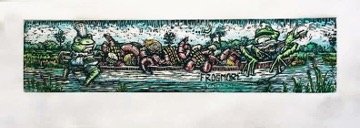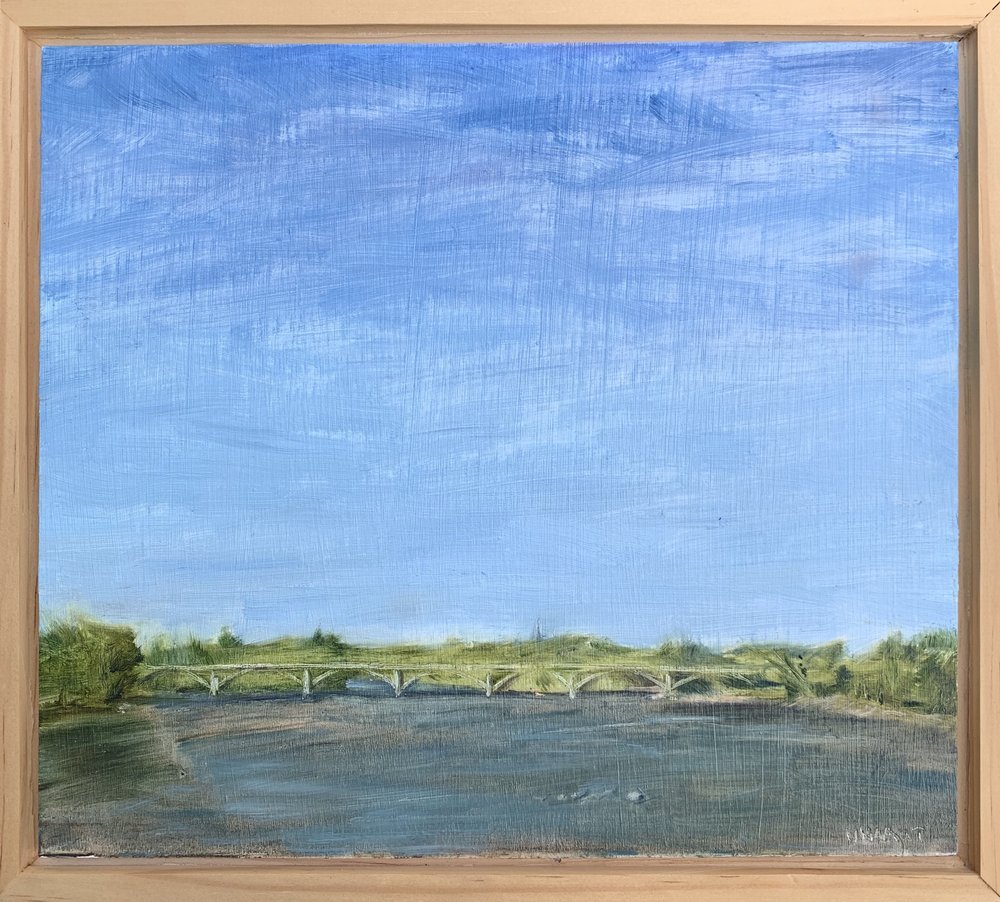The last time anyone in South Carolina heard from the positive hardcore band Bedlam Hour was in 1995, when the band released **Contact**, their final album–until now. Rumblings started online earlier this year as Bedlam Hour archival videos surfaced on YouTube, posted by bandleader Chuck Walker; news of new material on the way soon followed. Larry Parker’s River Monster Records signed the band, released **Win A Billion Dollars!** on May 1st and announced a trio of live shows, which happen this coming weekend in Charleston, Columbia, and Myrtle Beach.
Here’s a brief history lesson for those unfamiliar with the impact Bedlam Hour had on the Columbia music scene in its prime. Formed in 1983, the band was an unpredictable, entertaining live experience, with cereal and hot dogs involved in classics such as “Frankenberry Mosh.” The song “Grey Sweater” has been mentioned in several “Best Columbia Songs” lists over the years, and the album it appeared on, 1987’s **Rock The Cradle** made them one of the first bands from the local rock scene to put out a record on a widely distributed indie label, Positive Force. Over the next 8 years the band toured internationally before what Walker terms as a “hiatus” in 1995.
“I was a first year teacher and wrote that album in my garage in Georgetown,” Walker says. “We recorded it at the Jam Room in two days.” After a few shows in support of the album, the band decided to take a break, he recalls.
“My wife and I were starting our family, several of the band members had moved away for their families and careers, it was a good time to take a break. So I checked out of the professional music business, though I still regularly wrote and recorded music, and stayed active as a player and singer in church for 27 years, which helped me develop my skills.” Walker is still teaching, and is now both a father and grandfather, and survived a cancer diagnosis in 2021.
Walker has always been more of a musician than the hardcore scene would give him credit for, whether it’s the perfect pop structure of “Grey Sweater,” the alt-rock precursor of his side gig with the band Virgin Ironpants, or the little-known garage project Mill Village Apostles that saw him write new punk and hardcore style music for ancient church hymns. Bedlam Hour drummer Derek Roddy has been the band member who took the professional musician path the most, he is well known internationally as a music educator and drum clinician and has played with several major death metal acts including Nile, Malevolent Creation, and Hate Eternal. It was Roddy that prompted this new chapter of the band, Walker says.
“This new album is the result of a dinner conversation between me and Derek, when we talked about the 40th anniversary of the band and how it would be fun to play a show,” Walker says. “Derek recommended we record something new to go with it, and I went home and wrote most of this album.”
The other core band members represented on the new material include bassist Adam Kolesar, who lives in New York, Scott Kenneally and Ed Baker, who are in Columbia, Brian McKenzie in Myrtle Beach, and Roddy, who lives in Florida. Johnny Walker contributes saxophone parts, and guest vocalists include Billy Riot of Soda City Riot, Chris McLane and David Sease of Stretch Armstrong, and Dylan Walker, Chuck’s daughter.
“We recorded all of the tracks at Brian McKenzie’s studio, The Spiritual Center for the Creative and Sonically Inspired,” Walker says. “Brian and I handled production, and co-wrote two of the songs.” With modern recording techniques, the parts were done in various locales, from Roddy tracking drums in Florida to Ed Baker doing his keyboard parts in his own Columbia studio. For the live shows, all of the musicians will play live with the band, along with some of the guest vocalists.
Getting back to Bedlam Hour after all these years has been both easier and more enjoyable than Walker had imagined, he notes.
“We are older and wiser, and technology has made punk rock a lot easier in terms of production and promotion,” He says. “Bedlam Hour was always its own category, we never really fit into trends–we just tried to create music that we loved and put on the kind of live show that we would like to see.”
The new Bedlam Hour album reflects both that newfound enthusiasm and the maturity that comes with several decades of personal and musical growth. Walker’s take on the new material shows that personal side, especially.
“Brian once pointed out that Bedlam Hour was a combination of heartfelt lyricism and humorous mosh-fueled bedlam,” Walker says. “So, the new record has "RE: Generation" which deals with staying positive and keeping the punk rock DIY ethos alive across generations. That song is also an anthem of encouragement for anyone going through tough times. "Quest For Truth" deals with the search for significance through reflection, exploration, and logic. "$1 Billion" tells the story of growing up in South Carolina punk rock, falling in love with my lifelong soulmate (my wife of 32 years), and becoming a proud grandfather. "Uncle Sam Slam/Kashi Moshy" is a humorous and autobiographical ode to living in an old man's body and all that comes with it. "Never End" is a love song to the South Carolina hardcore scene and a celebration of getting together to celebrate punk rock life.”
This weekend’s flurry of shows isn’t a one-shot deal, Walker confirms. “My plan is to stay very active in music for the next 15-plus years,” He says. “There are already plans for future Bedlam Hour releases, and I am working on a new project called Astronaut Assembly for 2024-2026. Brian and I perform in a 60s garage rock cover band called Small City Rock, you can see us performing at the beach this summer.”
Bedlam Hour plays the New Brookland Tavern on Saturday, June 17th. Brandy and the Butcher and Soda City Riot open this show.
Facebook Event and Tickets































